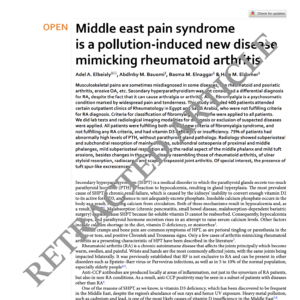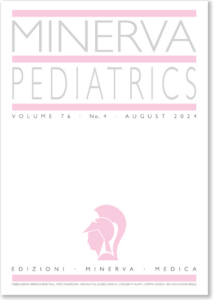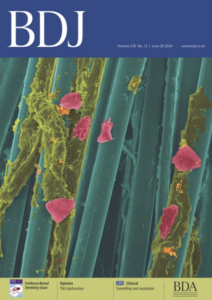A researcher who posted on LinkedIn about a paper that plagiarized his work says he’s now the subject of an email campaign making false allegations about his articles.
In July, we reported that Sasan Sadrizadeh, researcher at KTH Royal Institute of Technology in Stockholm, had his work plagiarized in a now-retracted paper.
“In what seems to be a direct response to our efforts,” as Sadrizadeh wrote in a recent LinkedIn post, his bosses, colleagues, and journals have been inundated with emails from impostors, accusing Sadrizadeh of misuse of funds and calling for the removal of his articles. At least one journal editor seems to have taken the allegations seriously.
Sadrizadeh’s case is reminiscent of the 2023 cyberstalking of Harvard Medical School professor Joseph Loscalzo on PubPeer.
Someone impersonating Thomas Hamacher, a researcher and professor at the Technical University of Munich in Germany, emailed several journal editors-in-chief in July, claiming to speak on behalf of the German Energy Agency (dena). However, the domain the email came from, “dena-de.net,” is registered to a Squarespace account that was created in June, according to the WHOIS domain database, while the official email domain of dena is dena.de.net.
In one instance, the false Hamacher sent an email to the editors of several journals, including Building and Environment Journal and Total Environment Journal, alleging Sadrizadeh had failed to disclose funding from dena for the research described in the publications. The emails accused Sadrizadeh of “misappropriation” of funds and “serious ethical misconduct.” They then request the “immediate withdrawal” of the article and “a pause on the review of publication of any pending submissions” by Sadrizadeh. “Relevant officials” from the KTH Royal Institute of Technology were copied, including the president, Anders Söderholm, and several vice presidents.
Bin Chen, an assistant editor at Journal of Cleaner Production, where Sadrizadeh has at least two papers published, reached out to Sadrizadeh after receiving an identical email from the Hamacher impostor. Chen asked for a “prompt and full response within two weeks” and said he would also consider informing the research institution and funding agency that supported the research. “Please note that if we do not have an adequate and timely response, we may be forced to conclude that the allegations are truthful,” he said.
After Sadrizadeh responded, informing the editor that the emails were spam, Chen told him the journal “understand[s] the case now” and that Chen would inform the other editors.
Sadrizadeh told us that he does not receive funding from dena. The grant number cited in the impostor emails was “DEA 2024.315.4H.”
Fiona Vonnemann, a member of dena’s legal council, told Retraction Watch she “cannot confirm” if the grant “even exists” and said it was “likely fabricated.”
On July 30, the Hamacher impostor sent an email to KTH President Anders Söderholm, telling him “a lawsuit has been filed against him by the German Energy Agency.”
Sadrizadeh said he sent Hamacher an email letting him know that he was being impersonated. Sadrizadeh said the two then spoke on the phone and that Hamacher is aware of the problem. Hamacher did not respond to our request for comment.
Vonnemann confirmed “the sender’s email address is not ours” in an email sent to Sadrizadeh. She also said “there is little we can do in this situation, as these actions do not constitute a criminal offense.”
In an email to Retraction Watch, Vonnemann confirmed that the emails are not affiliated with dena. “The statements in these emails do not in any way reflect views of dena. They appear to be spam emails,” she told us.
An unnamed representative of dena in a different email said they had contacted the dena IT department, and asked for Squarespace correspondence from Sadrizadeh “so i [sic] can look into pressing charges.” However, Vonnemann said in an email the “only action we are taking (from a legal standpoint) is to prevent the misuse of an email address that mimics ours.”
Sadrizadeh sent Squarespace an email requesting an investigation into the domain and for Squarespace to reveal the people behind it. A representative responded, saying they “take reports like this very seriously, and we actively keep track of them.” The domain no longer works and it isn’t available online. Emails we sent to the address that contacted the journals bounced back.
Squarespace did not respond to our request for comment.
Someone using another email account purporting to be that of Fariborz Haghighat, a researcher at Concordia University, sent an email to several KTH faculty members, including Sadrizadeh, with the subject line “No place for energy engineering <brainfarts> in scientific literature.” The email contained only a link to the PubPeer page for the PhD student mentioned in our original post, Amirmohammad Behzadi. Many of his papers have PubPeer comments accusing Behzadi of over-citing his own work.
Haghighat did not respond to our request for comment.
Although Sadrizadeh told us he believes the comments are another attempt to discredit him and Behzadi, some of the PubPeer comments date from December 2023, months before he went public with his plagiarism charge.
Many of the comments contain similar critiques of unnecessary self-citation. In one, on the paper “4E analysis of efficient waste heat recovery from SOFC using APC: An effort to reach maximum efficiency and minimum emission through an application of grey wolf optimization,” user “Tricorynus dichrous” commented, “fundamental terms don’t need to be cited with any source because they are direct explanations of the first and second law of thermodynamics,” but the paper had cited previous work of Behzadi and his colleagues for these equations. If any citations were necessary, the authors should have used a primary source such as a book, Tricorynus wrote.
Behzadi declined to comment on these allegations, but Sadrizadeh told us he thought they were “false” and referred us to Behzadi’s SCOPUS profile, which Sadrizadeh said shows only 8% of Behzadi’s citations are self-citations. Clarivate’s Web of Science shows the same percentage of self-citations.
Sadrizadeh said self-citation is “not only common but also often necessary to demonstrate the continuity and development of their research” and that failure to do so would make it “challenging to trace the evolution of their research and the cumulative knowledge they have contributed to the field.”
In his LinkedIn post about the emails, Sadrizadeh also said those who commented on his previous LinkedIn post calling out the plagiarism of his paper received emails accusing him of misconduct, as the journals had. Ola Eriksson, a professor at the University of Gävle in Gävle, Sweden, who had commented on the first post, replied that he had a “strong suspicion” the email he received was “bogus.”
Sadreizadeh told us the apparent retaliation against him felt like “organized crime. If you even go against these kind of people, they do whatever they can to stop you.”
Like Retraction Watch? You can make a tax-deductible contribution to support our work, follow us on Twitter, like us on Facebook, add us to your RSS reader, or subscribe to our daily digest. If you find a retraction that’s not in our database, you can let us know here. For comments or feedback, email us at team@retractionwatch.com.








